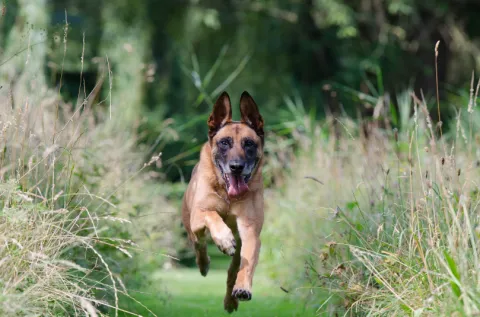July is National Lost Pet Prevention Month
We hope you had a great Fourth of July and that your pets were safe, too. July is National Lost Pet Prevention Month, highlighting one of the scariest experiences you can have as a pet owner - losing your furry friend.
Why Pets Get Lost
Pets can go missing for many reasons. They may escape from an enclosed backyard or inadvertently get let out by your kids during a playdate or gardener tending to your yard. They might break away from the leash while you're on vacation or jump out of the car when you stop at a gas station. Or, some pets can panic when they hear fireworks or thunderstorms.
A dog that gets off the leash or wanders to the other side of the park while you're playing fetch may get picked up by a Good Samaritan. However, if your dog gets into a car with a well-meaning stranger, it can be harder for you to find him. Dogs that get lost may also roam around, unable to find their way home. This is especially a concern if your dog is frightened. Wandering dogs may get in accidents or be attacked by another animal, making it physically impossible for them to return to you.
The most common lost cat scenario involves the cat getting trapped somewhere. When cats don't feel well, they tend to seclude themselves. This can make it tough for you to find your cat even if they haven't left the neighborhood. If your cat found a safe place to hide in someone else's car, they might accidentally get transported far away from home.
Unfortunately, some pets get kidnapped. Dogs that are kept outside may get lured out of your yard with treats. If you tied your dog outside the coffee shop while you ran in for your morning cup of Joe, a petnapper might just walk by and take him. Savvy pet snatchers may remove your pet's identifiers, such as ID tags and microchips, making it even more challenging for you to reunite with your animal.
Lost Pet Prevention
The best way to help a lost pet is to prevent the animal from going missing in the first place. Placing ID tags on a well-fitting collar is a great place to start. The collar should fit snugly enough that your pet can't slip it off. You should be able to fit one or two fingers underneath the collar to ensure that it's not too tight. Check the hardware on the collar regularly. Worn buckles or tags won't help you if they don't stay on your pet.
Microchipping is also an effective way to keep tabs on your furry friend. These tiny devices are implanted using a needle and typically remain inside the pet for life. Most people know they can bring a found animal to a veterinarian, shelter or rescue organization to scan the pet for a microchip. When your pet's microchip is scanned, it will match up with your contact information in a database. If you do have your animal microchipped, make sure to keep your data updated. About half of pet owners don't submit contact information or keep it accurate in the microchip database if a move occurs or a phone number is changed, making the device useless.
Keeping your animal indoors is one of the best ways to prevent losing your pet. Cats can easily jump a 6-foot fence. Dogs may not be so agile, but they may try to make their own escape routes. If you can keep your eye on your pet while it's outdoors, you can prevent a lost animal or pet-snatching scenario. Many people with indoor pets neglect to put collars and ID tags on them. This is a mistake. If your indoor animal does run out the front door, it might be mistaken for a stray.
What Should You Do If Your Pet Does Go Missing?
The best thing to do is to start looking for your pet immediately. The longer you wait, the lower your chances are of recovering your furry friend. Posting signs and letting neighbors know can help everyone stay on the lookout for your little buddy. Call our animal shelter at 949-470-3045 to file a missing pet report and check our website (cmvas.org) daily.
Unfortunately, calling your dog's name repeatedly can make the dog more frightened, especially if others have tried to do so while reaching out to grab the dog. If you catch a glimpse of your dog running free, don't chase or call to him. Even trying to approach the animal slowly can freak it out if it's already panicked. Getting down on your knees or even lying flat on the ground can help calm your pet.
If you're trying to capture a loose dog, pretending you're eating something that's tasty and smelly is non-threatening. This can make the dog realize that it can trust you. Be patient. Eventually, you should be able to lure the dog into a crate or your car and bring it home.
We hope these tips will help prevent your pet straying from home.

